mango
Mango and More: Delicacies from the Miyazaki Prefecture!

Sophia Wasylinko
Posted on December 18, 2024
Share:
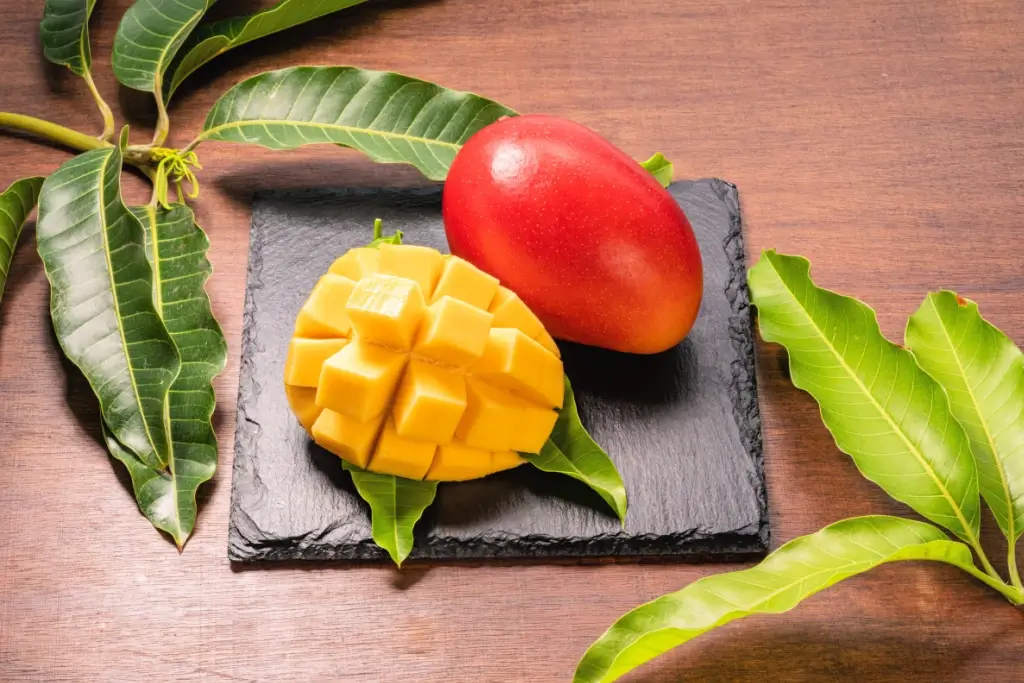
Have you heard of Miyazaki mango? This fruit is carefully cultivated and sought out as a luxury item. Some people travel to Miyazaki City during the spring and summer months just to taste it. However, the prefecture is famous for other delicacies, including chicken, cheese-filled pastries, and chilled rice soup. Each dish is worth eating in person, especially since you learn about the region’s rich culinary heritage. Let’s explore Miyazaki mango and other local dishes together.
Where is Miyazaki Prefecture?
Miyazaki Prefecture is located on the island of Kyūshū in southeast Japan. Previously named Hyūga Province until 1883, it housed many powerful families, including the Shimazu samurai, Nobeoka han, and Itō clan. According to legend, in a cave in Takachiho, Miyazaki, the sun goddess Amaterasu, hid from her insolent brother Susanoo.

As one might expect, this region is home to many natural and historical landmarks. About 12% of its total land area is designated National Parks, while there are 23 National Historic and 109 Prefectural Historic Sites. Tourist attractions include Obi Castle Town, Nojirikopia, Takachiho Gorge, and Kunimigaoka.
Miyazaki Mango
We can’t discuss Miyazaki cuisine without mentioning its highly coveted mango. Descended from the Irwin variety introduced in the 1980s, its unique taste and color stem from the region’s abundant sunshine and warm temperatures. The fruit is left to ripen fully, wrapped in nets to prevent bruising, and harvested between April and August.
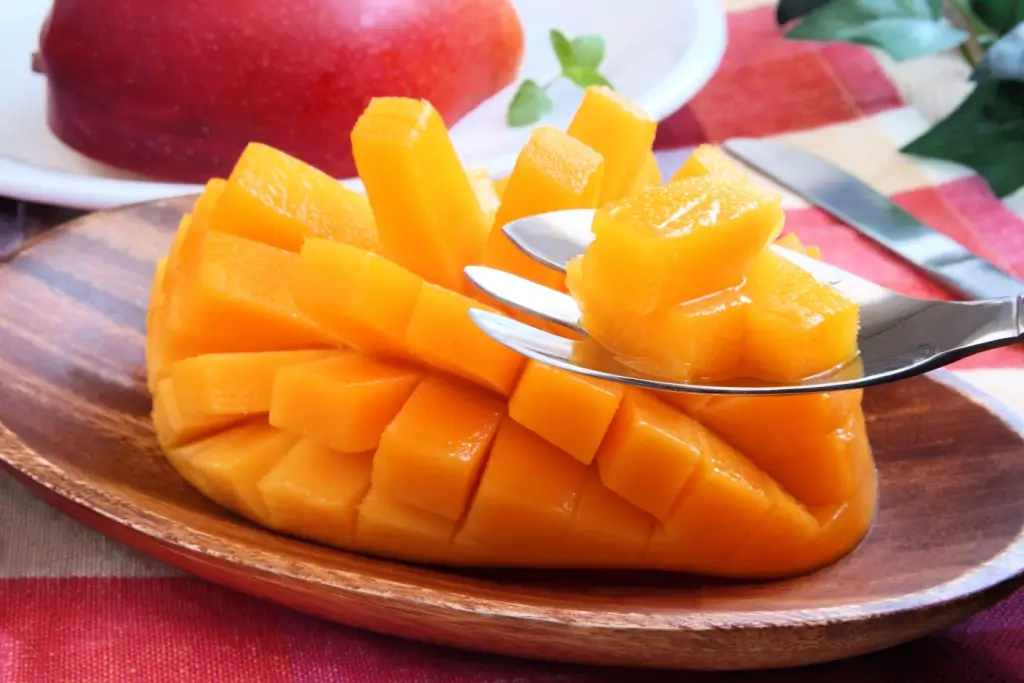
To achieve the Taiyo no Tamago (Egg of the Sun) certification, the fruit must weigh at least 350 grams and have a sugar content of 15 degrees or higher. In 2023, a pair sold at an auction for 600,000 JPY ($3900 USD)! While found in pastries and other dishes, these citrus fruits are best eaten in their original forms.
Chicken Nanban
Miyazaki is home to two chicken-based dishes. The first one is named after nanbanzuke, marinated fried fish based on the Portuguese dish escabeche. Originating in Nobeoka City, chicken nanban is so popular that it has its holiday, Nanban Day (July 8), and its mascot, Chicken Nanbancho.
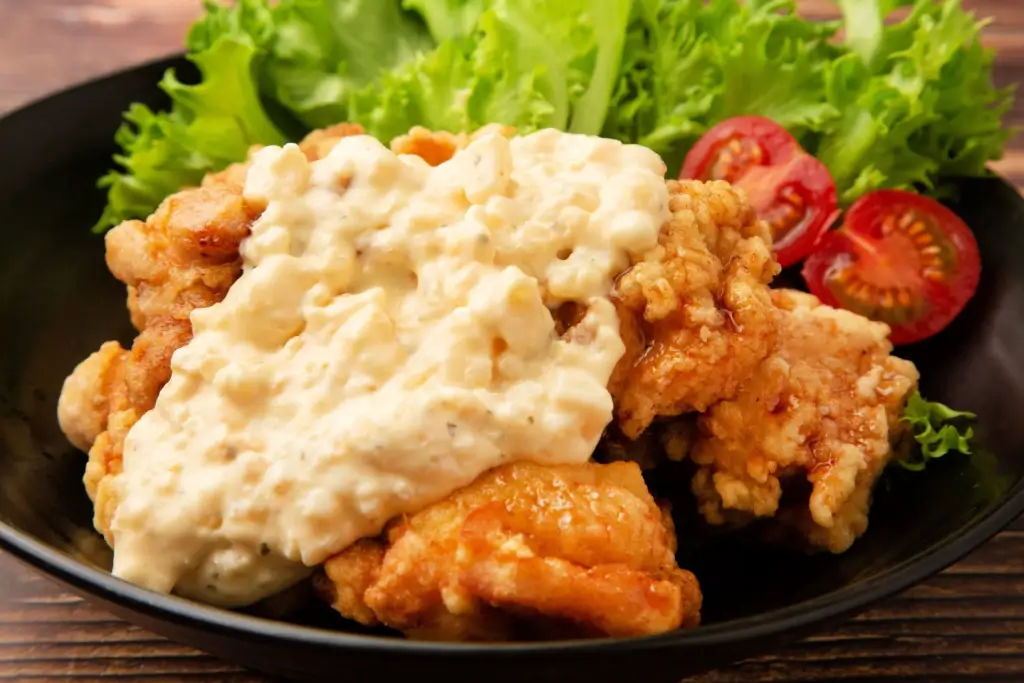
Chicken nanban uses boneless meat that is breaded and deep-fried. Depending on the location, it’s topped with sweet-and-sour sauce (with or without tartar sauce) or aurora sauce. Naochan and Aji no Ogura Honten claim to have invented it, and they are both worth visiting. You can also try any of the restaurants on the Chicken Nanban Map.
Are you looking for great snacks from places like Miyazaki? Check out Sakuraco! Sakuraco delivers traditional Japanese snacks, teas, and sweets from local Japanese makers directly to your door so you can enjoy the latest treats directly from Japan!
Miyazaki Jitokko
A healthier option than our last entry, this unique breed is named after the jito (land stewards); also called Jidori (local chicken), it was named a Natural Monument in 1943. Similar to Miyazaki mangoes, there are specific guidelines for raising these birds, such as letting them run free range at specially certified farms.
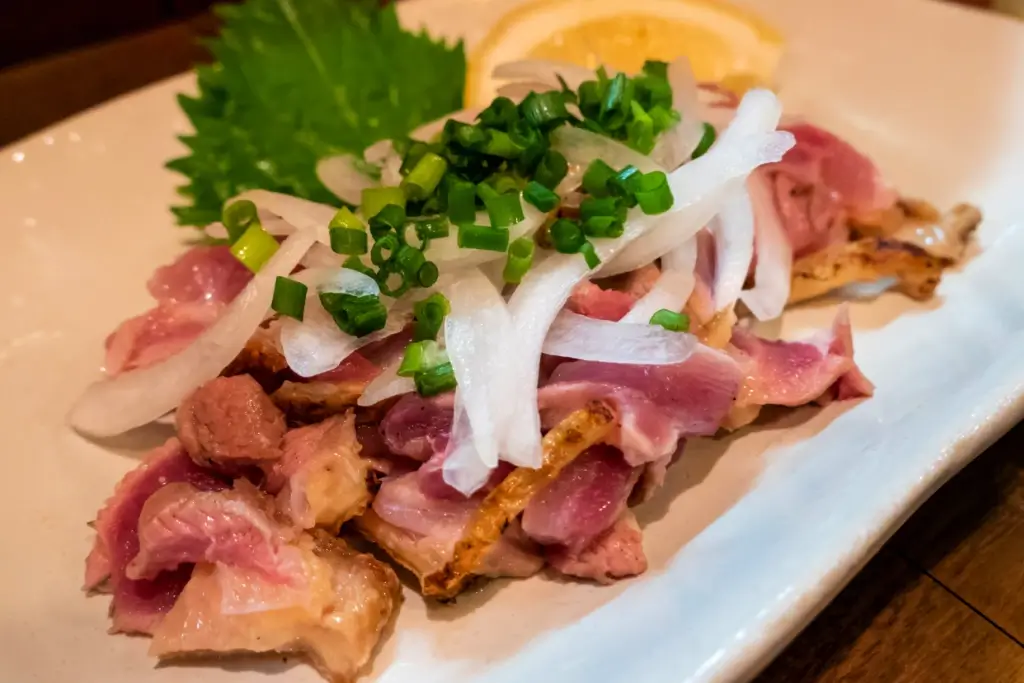
Miyazaki Jitokko meat is juicy and tender. It is usually grilled over charcoal with yuzu pepper. However, it is also served raw as sashimi or tataki, which is slightly seared. Restaurants selling Miyazaki Jitokko include Torinoya, Gunkei Honten Kakushigura, and locations selling chicken nanban.
Hiya-Jiru
If you’re traveling through Miyazaki in the summer, try hiya-jiru (chilled soup). Dating back to the Kamakura period (1185-1333), monks originally ate it before spreading it to farmers and soldiers in combat. The dish is a summer staple because it’s simple yet filling.
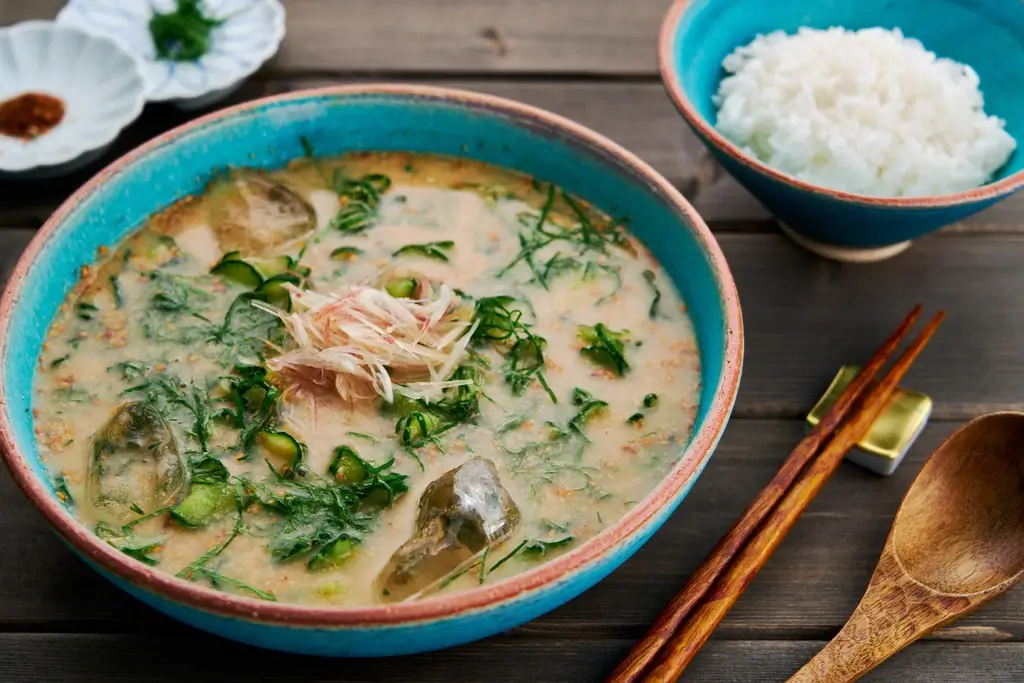
Hiya-jiru’s base consists of ground sardines, miso, and sesame seeds, which are roasted and added to dashi. The broth and toppings, usually tofu and cucumbers, are poured over hot rice. While it’s served at many restaurants, including Furusato Ryori Suginoko, hiya-jiru is also easy to cook at home.
Cheese Manju
A popular Japanese pastry, manju is usually dense and contains an anko (bean paste) filling. Miyazaki’s version is Western-style cookie dough or pie crust with a cream cheese filling. Variations include vanilla cream cheese and coconut dough. First sold around 1980, cheese manju is popular with locals and commuters looking for a quick snack.
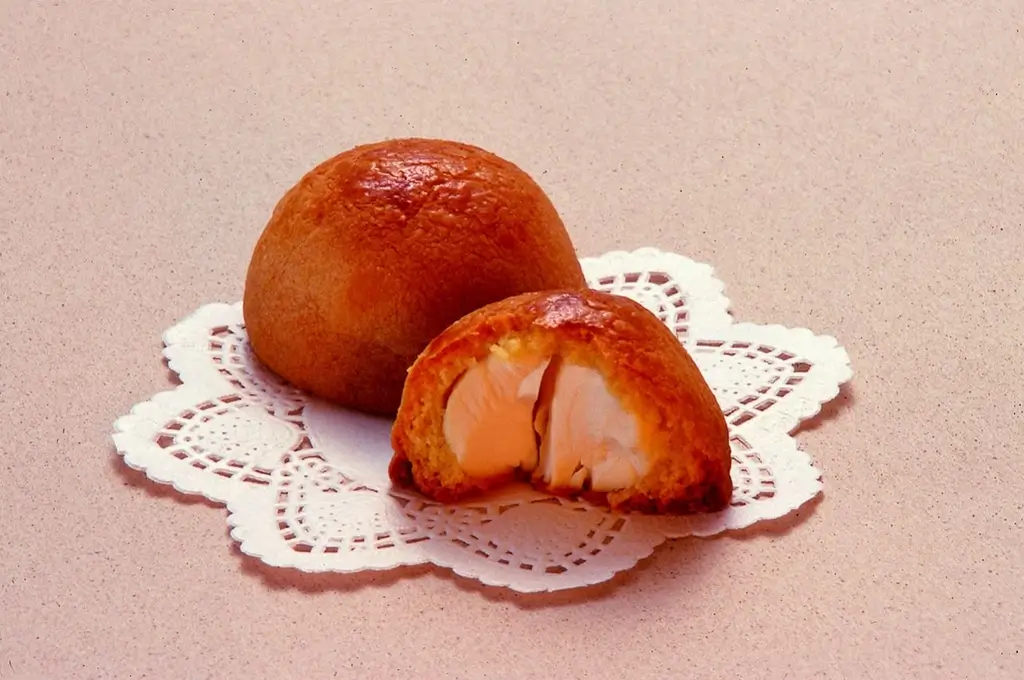
Many Miyazaki bakeries sell their cheese manju versions, such as Okashi-no-Hiraya and Torahiko. Okashidokoro Warabe’s confections became a hit after being served on flights. Due to its popularity, the manju sells out quickly, so we suggest you reserve orders in advance.
Why should I try unique foods like Miyazaki mango?
Trying unique foods like Miyazaki mangoes introduces you to the prefecture’s culinary wonders. This is especially true of mangoes and jitokko, which are only in this region. Miyazaki is also home to variations on classic foods, particularly cheese manju and chicken nanban. Each restaurant makes a different dish; you could spend a whole day comparing and contrasting menus.
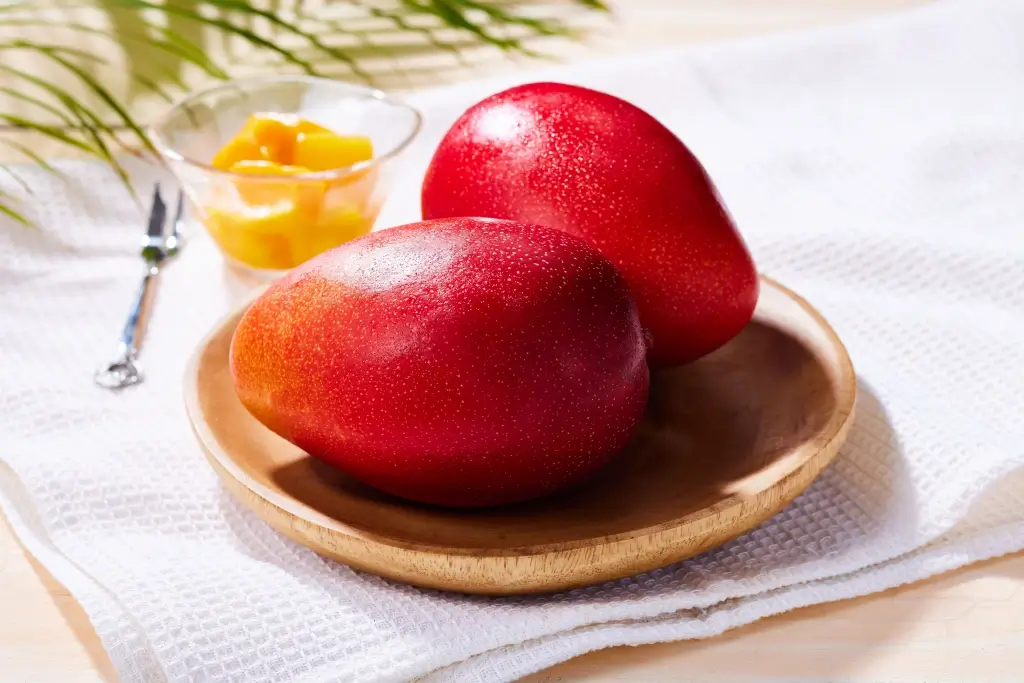
Finally, sampling Miyazaki’s cuisine helps you step out of your comfort zone. Whether you make friends at an eatery or cook hiya-jiru from scratch, you’ll fall further in love with its gastronomy. Overall, Miyazaki mango is part of a rich culinary history in the prefecture. Have you sampled any of these delicacies? What other specialties should we have highlighted? Tell us in the comments.
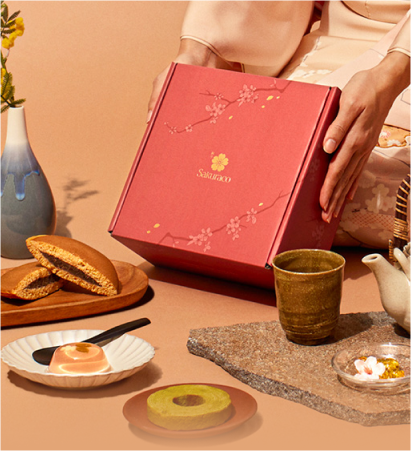
Discover authentic flavors with Sakuraco
Get Sakuraco 

Discover authentic flavors with Sakuraco
Get Sakuraco 
Related Articles
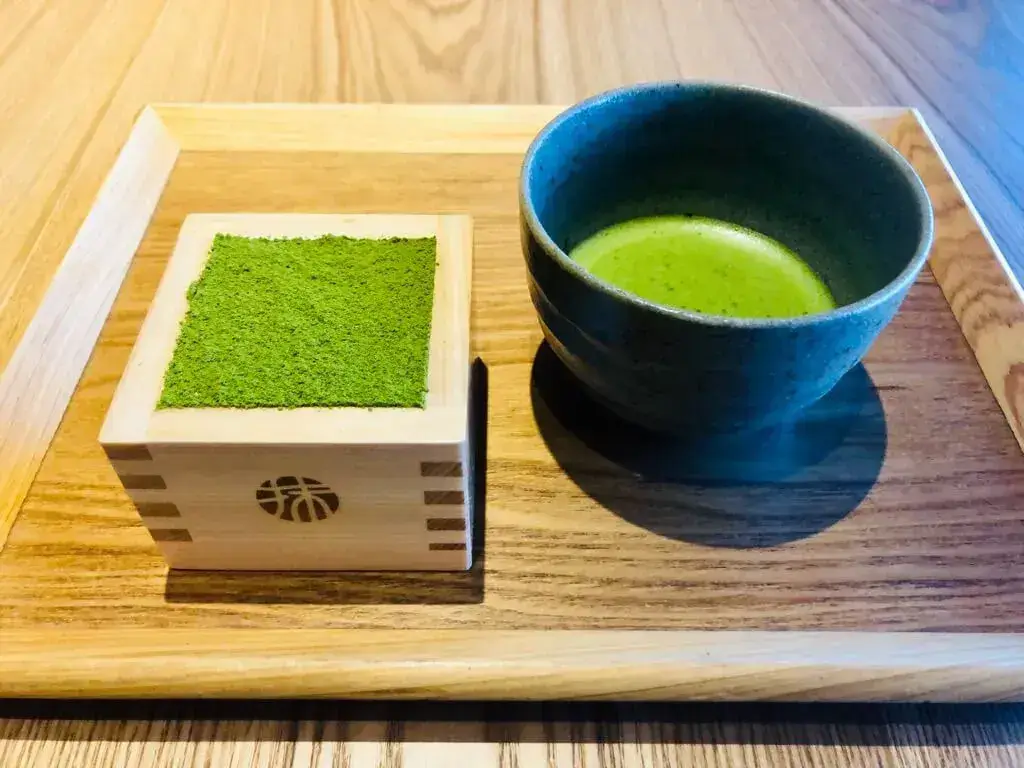
Matcha Cafe Spotlight: The Ultimate Guide to Maccha House
The matcha cafe has revived the tea ceremony tradition in a more fun and relaxed setting, especially in urban areas. Today, we’ll take a look at one such establishment – Maccha House. Let’s find out how it, along with other matcha cafes, helps keep the country’s tea culture alive
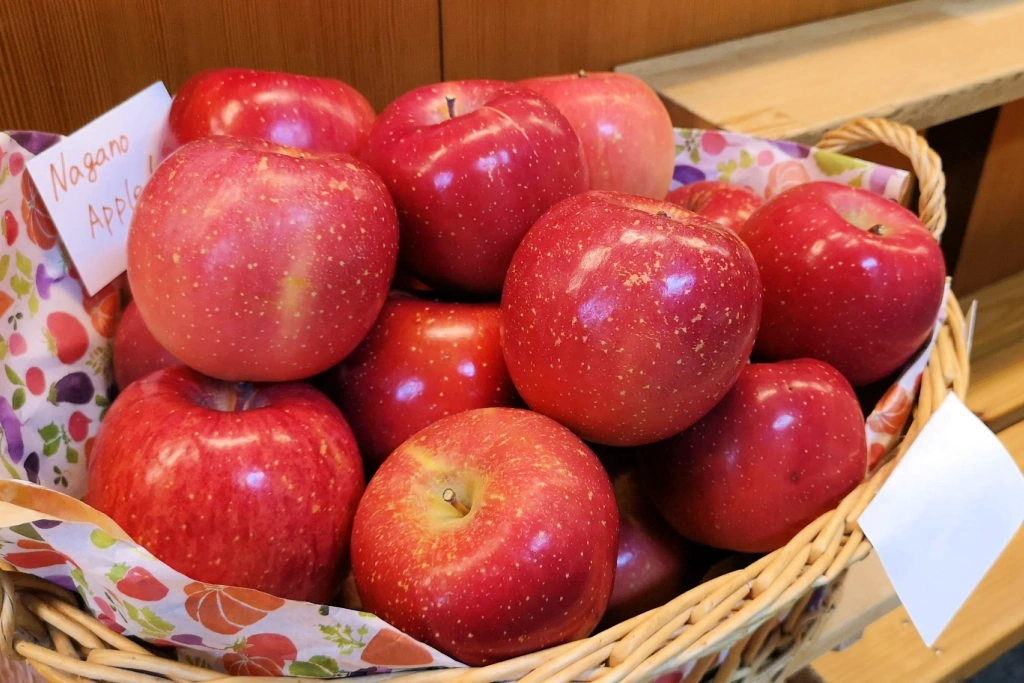
Shinshu Apples: The Pride of Nagano’s Orchards
Right after Aomori, Nagano consistently ranks among Japan’s top apple producers. But its fame doesn’t stop there! Shinshu apples are renowned worldwide, cherished both as fresh fruit and in a variety of delicious apple-based treats. That’s more than enough reason for us to dive in and discover what makes them so special!
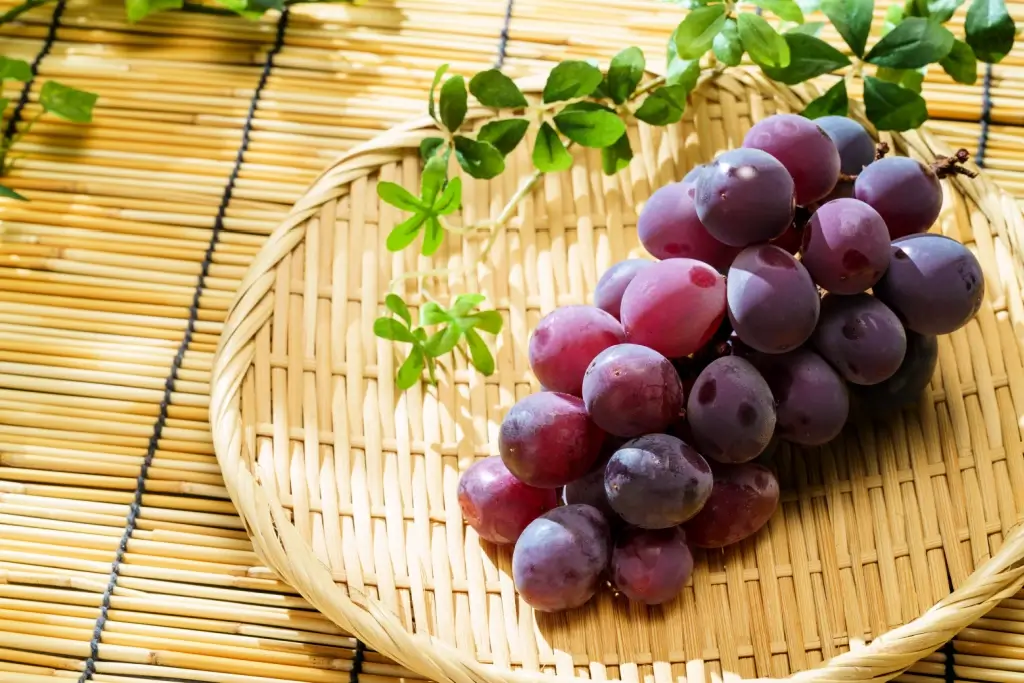
Kyoho Grapes: A Jewel of Japanese Vineyards
From late summer to early fall, you can easily spot stunning Kyoho grapes elegantly packed in gift baskets at supermarkets and specialty fruit shops across Japan. These treasured fruits are frequently presented as elegant gifts, representing both excellence and thoughtful friendship.
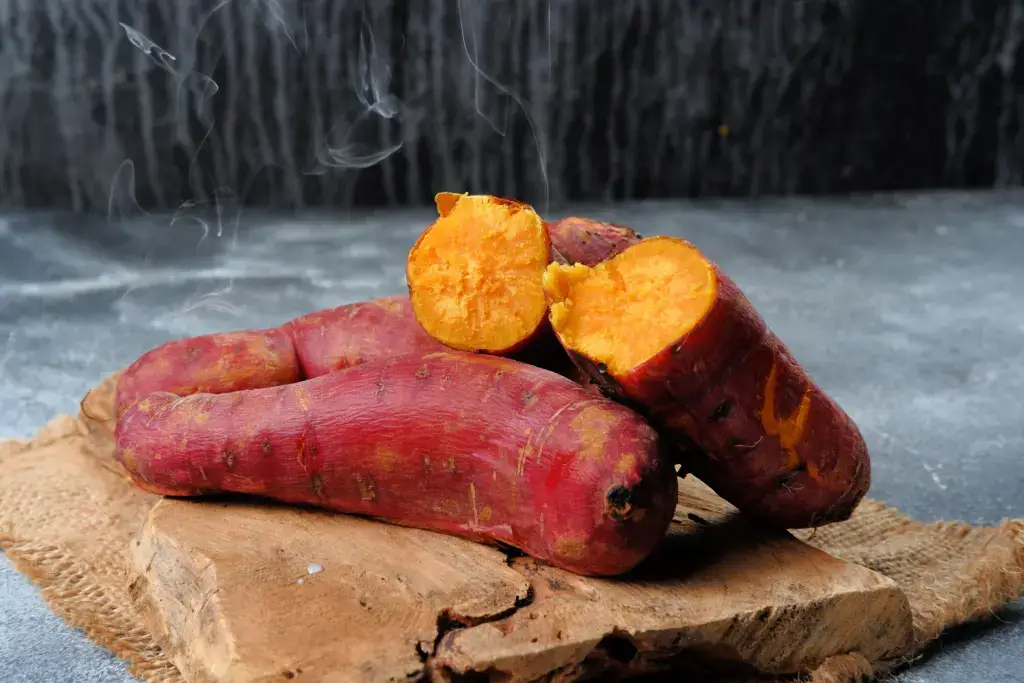
Japanese Sweet Potato Delights: Ultimate Guide of Wagashi To Look Out For!
The Japanese sweet potato, or satsumaimo, is a root vegetable characterized by its vibrant purple skin and naturally sweet, golden-yellow flesh.



